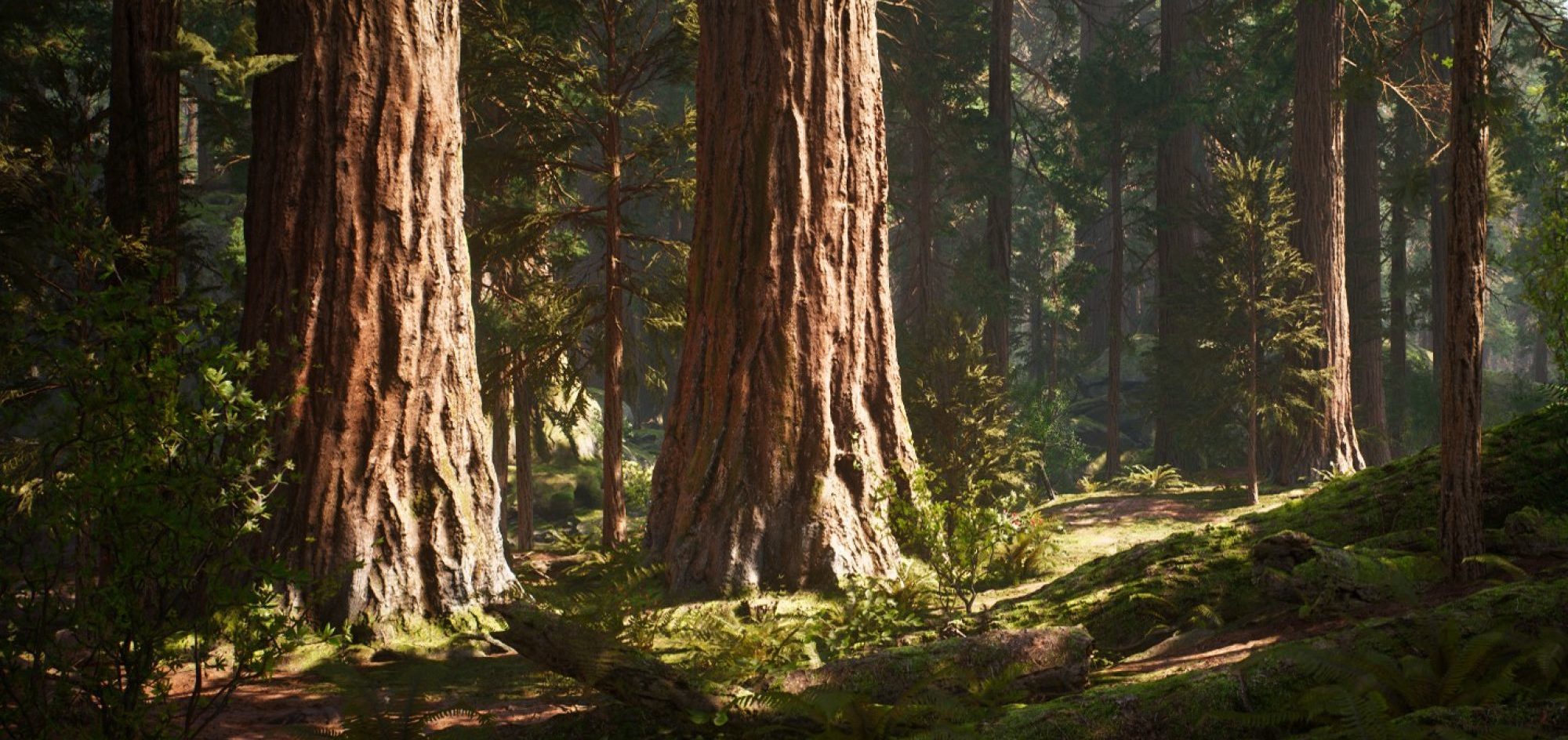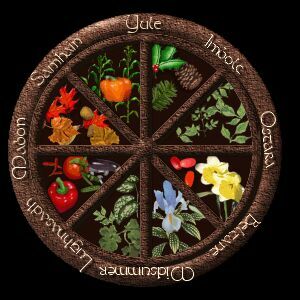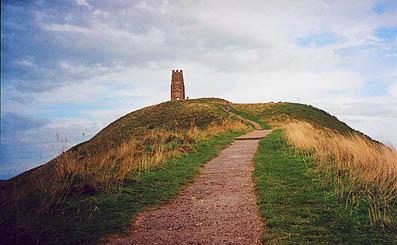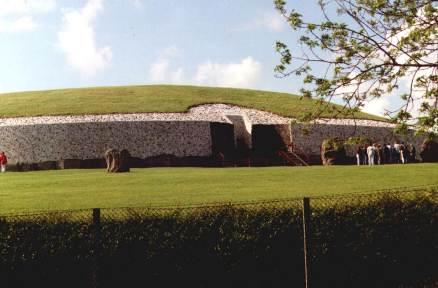“Druids are a problematical bunch.”
~~ Dr JD Hill, curator of the Iron Age Collections in the Dept.of Prehistory and Europe at the British Museum.
-
- How did Reformed Druidism begin?
- Are you a “schism” of the RDNA?
- What is the relationship between the RDG and the RDNA?
- You mention dogma. I thought Reformed Druids “eschew dogma”.
- Is RDG subordinate to OMS?
- Why “Reformed Druids of Gaia”? Why not a Celtic Goddess?
- What do you believe?
- You say many things that I don’t believe are Druidic or even Celtic. How can you, presenting your selves as Druids, present such ideas?
- What did the ancient Druids believe?
- What are your goals?
- Why do you call yourselves”Reformed”?
- Why Druidry in this century?
- What is Druidry?
- In what way does Druidry differ from any other Neo-Pagan paths?
- How do I tell “real” Druids from Druid wannabees?
- So, do you all wear white robes?
- I’ve read that you require members to be Polyamourous.
- Heinlein was a Libertarian, right?
- What do you do?
- Is it true that only men were druids? Can women be druids? Were there women Druids?
- What about the LGBTQ Community?
- Do/Did Druids do ritual sacrificing of people or animals?
- Do all Druids hug trees?
- Do Druids perform Magick spells?
- What holidays do Druids celebrate?
- What Gods did the Druids worship?
- Dalon ap Landu?? I’ve never heard of him. What did you do, make him up?
- What are the historical sources by which we can know the Druids?
- Do you cast a circle?
- Do you worship Satan?
- Do you believe in and follow the Pagan Rede, and the “Law of Three?”
- If you don’t follow the Rede than what is the basis of your ethics?
- Who are / were the Celts?
- Wait a minute: The Celts were European. They are part of the R1b Chromosome group Isn’t that correct?
- How do you say … in Celtic?
- Are Druids polytheists or pantheists? Monotheists?
- Is Nature important to Druids?
- Was Stonehenge a Druidic temple?
- What about Glastonbury?
- Are there any other Druidic sites?
- Was Merlin a Druid?
- Was Gandalf/Mithrandir a Druid?
- What is a Grove?
- In the old days they say it took nineteen years to train a Druid, how can you do it in 19 weeks?
- I read somewhere that you Reformed Druids don’t require study. How can you claim to be Druids if you don’t?
- I’m a Wiccan. Can I be a Druid too?
- Are there any connections between Druid and Native American Ways?
- Is the Goddess honored in Druidry?
- Do I have to be a Celt to be a Druid?
- You don’t really seem very Celtic oriented.
- What’s up with the Sanscrit “Om” symbol you display?
- It (Druidry) has nothing to do with position within a people? Nothing to do with being a repository of the wisdom “of the tribe”? What does it mean unconnected to one’s people and one’s land?
- Is Druidry shamanic?
- You understand that Druidism isn’t a religion, right?
- How can being a Druid help me in my everyday life?
- Are you people for real?
- Do you ever really meet, or are you just online?
- What will I get out of joining?
- Who can be a Reformed Druid?
- How do I join?
- How do I quit?
Q: How did Reformed Druidism begin?
A: With the Reformed Druids of North America:
In 1963 students at Carleton College in Northfield, MN USA objected to the college’s requirement of mandatory attendance at religious services, so they protested by making up their own religion. The requirement was thus mocked and was withdrawn. Members found it groovy and continued to participate in the group in order to explore world faiths and personal paths in an open and honest way. As they graduated, they started groups in other states. By the 1980s there were about 10 groves scattered
across the country.Then Isaac Bonewits left to form Arn Draiocht Fein (ADF) Druidism, which later splintered and soon Henge of Keltria Druidism, and other groups appeared as well. In July of 2006 one of those groups, the Order of the Mithril Star (OMS), decided that it was apparent that the Reform had
outgrown “North America” and in fact (mostly through the OMS’ efforts) now spanned the globe, with Reformed Druids and or Groves appearing in 11 countries. To meet this new paradigm, Matriarch Ceridwen Seren-Ddaear of OMS proclaimed a new epoch of Reformed Druidism, and a new entity to address it: The Reformed Druids of Gaia. ~INDEX~
Q: Are you a “schism” of the RDNA?
A: No. A schism is a group that has broken away from its parent group. The RDG WAS NEVER a part of RDNA, nor does it have any “blood line” that can be traced back though there are Priests who are members of both and who hold lineage (“Apostolic succession”) through both. “Schisms” typically have hard feelings toward the group they broke away from. We harbor no hard feelings toward the RDNA, and in fact we honor them for the ground breaking work they did in the evolution of the Reform. Likewise, we have not broken away from anyone. We are something new all together. At best, we could be said to be a “clone” of the RDNA, but with an international expression, rather than a continental one (IOW, we are “of Gaia (of the Earth)”, whereas they are “of North America”).
- It should be noted that in early 2000, the Order of the Mithril Star (OMS) did join the RDNA for a brief time, which ended when the Matriarch of OMS declared them to be “in schism.” But, although OMS is today a part of RDG, what happened in OMS’ past has no bearing on RDG. Anyone telling you otherwise is a Troll.~INDEX~
Q: What is the relationship between the RDG and the RDNA?
A: None whatsoever. The Reformed Druids of Gaia is intended to be an international expression of Reformed Druidism. Members of the RDNA are considered “de-facto” members of RDG, but we do require registration for one to be counted as such. Degrees taken by RDNA members who register with us are not transferable — they must qualify for our 2nd and 3rd Degrees just as our members would have to qualify for theirs (There was a time when we did accept their Degrees, but RDNA “officials” have made it clear to us that they prefer we don’t, nor do they have any mechanism whereby they could reciprocate — each of their Groves is totally independent and individual ADs do as they wish). However, since the main requirement for membership in the RDNA is acceptance of the two tenets, technically, all members of RDG (living in North America) are in fact members of RDNA as well, and (as stated above) all members of RDNA are
“de-facto” members of RDG (if they live on Earth). Again, it should be emphasized that there is no connection (aside from a few members who belong to both groups) between the two organizations. The RDG was evolved from the philosophy of the RDNA, but there is no (what RDNA calls) “apostolic succession” from the RDNA to the RDG, and there are frankly many dogmatic differences, and similarities, between the two. ~INDEX~
Q: You mention dogma. Don’t Reformed Druids “eschew dogma”?
A: This is kind of a joke. Or rather it’s an outright lie. RDNA Druids have latched onto a whole lot of dogma, but prefer to be in denial about it, thinking themselves superior because of it. For example, ask them about “the season of sleep,” or “apostolic succession.” These are but two of many dogmas embraced (but denied as such by the RDNA). The fact is ALL religions have some dogma. It is the nature of the beast. Rather than deny this, and make liars of themselves, they should just embrace it.~INDEX~
Q: Is RDG subordinate to OMS?
A:. OMS serves the RDG as the teaching Order in service to the Reform, and is but one of several Orders under the RDG’s umbrella. The RDG itself is subordinate only to the Gods. ~INDEX~
Q: Why Reformed Druids of “Gaia”? Why not a Celtic Goddess?
A: The Earth is commonly referred to as Gaia by many Pagans today (and also in the scientific community, i.e. “Gaian Hypothesis”), so in this context we are saying “…of the Earth,” or, “of the world’, or “International”. Besides, Reformed Druidism has not traditionally ever been particularly Celto-centric. We believe anyone who loves Nature can become a Druid, regardless of race, nationality, ethnicity, language, gender, or gender preference. ~INDEX~
Q: What do you believe?
A: Nature is good. Simple but elegant. Our two basic tenets elaborate on this idea. ~INDEX~
Q:You say many things that I don’t believe are Druidic or even Celtic. How can you, presenting your selves as Druids, present such ideas?
A: 1st — how can you possibly know for sure? Just because it is written somewhere that an ancient Druid presented an idea, how are you certain that is true? We actually know very little about what the ancient Druids believed, and what we think we know of we cannot be certain. So if a modern Druid presents an idea, how do you know that an ancient Druid had never presented the same idea? You can’t possibly prove that either way. 2nd – If I am a Druid, and I am, then whatever I say becomes Druidic by my very act of saying it.(and, to borrow a phrase from Tim Zell, “If you don’t like it, you can’t have any.”). ~INDEX~
Q: What did the ancient Druids believe?
*A: We don’t really know, as they left no written records (and frankly, if anyone says they know, you should view them with great suspicion). Druidism was passed on as an oral tradition. But we can surmise. The poetic tradition in Druidism comes from the method the Celts used to trace their lineage and history.
Written records were distrusted for the most part, and though a runic writing system called Ogham did exist, it wasn’t used for much beyond burial markers and landmarks. Druids in training had to learn all the Bardic poetry, in a manner we would call sensory deprivation. Poetic inspiration was an important spiritual practice, which the Welsh have focused on in their Eisteddfod. In Irish myth there was a deity of poetry – Brigid. Oak was the most important symbol in druidic lore, as it is strong, tall, and very long-lived. Mistletoe was said to have healing qualities. Other important trees were the yew, for its offspring grew from the dead stump of its parent, representing perpetually-regenerating life. The Ogham alphabet was a list of tree names. Trees are important because they are bridges between the realms of Land and Sky – they communicate Water between these realms. When the Realms of Land, Sea and Sky meet, as within a tree or at a seashore for example, great power could manifest, and such places were best for poetic composition or spell-casting. Stones could channel, store, and direct earth-energy, and thus were used for markers, set in circles, and libations were poured over them in sacrifice. Fire-worship is strong as well, but doesn’t fit the Greek four-element picture. Fire is a thing unto itself, with the dual qualities of destructiveness and cleansing power. It is a spiritual principle, because it is always reaching up to the sky. This may be why they built those hilltop fires. Poetic inspiration is said to be a fire in the head, so Brigid is a fire deity as well. ~INDEX~
Q: What are your goals?
A: Enlightenment through exposure to Nature. Or peace, love, freedom and happiness. Pretty much the same as everyone else. ~INDEX~
Q: Why do you call yourself “Reformed”?
A: The ancient orthodox Druids allegedly did some nasty stuff, (everybody did back then) and we don’t. ~INDEX~
Q: Why Druidry in this century?
A: Why not? Actually, there are a number of good reasons for modern people to consider Druidism. Some see it as a way to
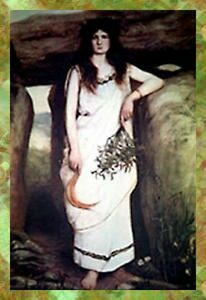 reconnect, or “ground” themselves in history, or to improve their relationship with their ancestors (if they are of Celtic descent). Some are attracted by the relationship with the natural world that a Druid cultivates, or by the artistic, creative methods used to build that relationship. There are those who choose Druidism over other forms of neopaganism. Perhaps a reason for that is because Druidism is not only a branch of neopaganism, but also the subject of academic study. Druidism is often of interest to archaeologists, historians, and mythographers who don’t necessarily consider themselves Druids, or even remotely pagan. Thus, there is a wealth of serious academic material available concerning the Druids, and many discover Druidism through it. Finally, there are those who choose Druidism over more conventional religions that are more accepted and widespread, such as Christianity. Christianity belongs to a middle-eastern language, culture, and mythology-set; Druidism belongs to the Indo-European set from which we in the West inherit virtually all our other cultural practices, including our languages. An exploration of Druidism is for many people a resurgence in Western Europe’s indigenous spirituality. Many seek Asatru to revive Northern Europe’s spirituality for much of the same reason. If mainstream religions cannot provide answers to those “deep”, spiritual, and philosophical questions, Druidism or another form of neopaganism is often the only answer. ~INDEX~
reconnect, or “ground” themselves in history, or to improve their relationship with their ancestors (if they are of Celtic descent). Some are attracted by the relationship with the natural world that a Druid cultivates, or by the artistic, creative methods used to build that relationship. There are those who choose Druidism over other forms of neopaganism. Perhaps a reason for that is because Druidism is not only a branch of neopaganism, but also the subject of academic study. Druidism is often of interest to archaeologists, historians, and mythographers who don’t necessarily consider themselves Druids, or even remotely pagan. Thus, there is a wealth of serious academic material available concerning the Druids, and many discover Druidism through it. Finally, there are those who choose Druidism over more conventional religions that are more accepted and widespread, such as Christianity. Christianity belongs to a middle-eastern language, culture, and mythology-set; Druidism belongs to the Indo-European set from which we in the West inherit virtually all our other cultural practices, including our languages. An exploration of Druidism is for many people a resurgence in Western Europe’s indigenous spirituality. Many seek Asatru to revive Northern Europe’s spirituality for much of the same reason. If mainstream religions cannot provide answers to those “deep”, spiritual, and philosophical questions, Druidism or another form of neopaganism is often the only answer. ~INDEX~
Q: What is Druidry?
A: Druidry is a way of life. It is a spirituality and a religion, but at the same time it is more than just a religion. It is communion with Nature, and with Nature’s Spirits. It is a way of life filled with constant learning and spiritual growth. ~INDEX~
Q: In what way does Druidry differ from any other Neo-Pagan paths?
A: Druids strive to be at one with Nature. Unlike other religions that see deity as a supernatural entity, Druids see deity within nature, within every living soul, within everything. We don’t know if modern day druidry is very different from what ancient Druids were like, but since Druids today don’t have
the same social standing as they did back then, this is likely. Druids played a very important role in society, responsible for laws, religious worship and entertainment. Neo-Druidry may seem similar to other Neo-Pagan paths, mainly because as with all Pagan paths, Nature plays a very important role. ~INDEX~
Q: How do I tell “real” Druids from Druid wannabees?
A: Druids are by nature, compassionate, benevolent, all accepting, liberal minded, tolerant, educated people, who universally accept anyone who reverences Nature as one of their own. Druids understand that we are all interconnected and interdependent on one another and on the whole of the planet. There was in recent times, a man who self-identified as a Druid who ran for US President as a Libertarian. In fact he was an “Anti-Druid.” The underlying philosophy of Libertarian-ism (Objectivism, social Darwinism, abject- selfishness) is totally at odds with the collectivist worldview of true Druidism, which sees every man and every woman as an extension of every other man and woman, or in more Bardic terms: “droplets in the infinite ocean of Mother Gaias womb.” ~INDEX~
Q: So, do you all wear white robes?
A: No, not all Druids wear white, in fact most Druids wear what feels right for them. It was Caesar who reported that the Druids
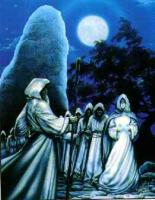 wore white, but that is the only evidence. It is far more likely that they wore brown or black or even green, or maybe a combination of these, or even more “likely you would have chaps with no robes at all, in fact, no clothes at all; probably painted blue and probably stoned out of their heads on magic mushrooms…”
wore white, but that is the only evidence. It is far more likely that they wore brown or black or even green, or maybe a combination of these, or even more “likely you would have chaps with no robes at all, in fact, no clothes at all; probably painted blue and probably stoned out of their heads on magic mushrooms…”
(Dr. Francis Pryor – Dept. Archaeology – University of Nottingham). Modern Druids
are just as likely to be naked as they are robed. The Order of the Mithril Star has pioneered in this among Druids, but other groups are starting to see the wisdom of it. One prominent Druid who is so inclined is OBODs Philip Carr-Gomm. The decision to do a ritual robed or naked depends upon factors such as private or public, and individual Groves may have their own customs regarding this. Of course, the weather may be a determining factor. 🙂 ~INDEX~
Q: I’ve read that you require members to be Polyamorus.
A: In 1962 Robert A. Heinlein wrote a novel, Stranger In A Strange Land. This book spoke to the founders of RDG, and it is a required reading for ordination into the 2nd Degree. Much of our ritual and custom are based upon some of its quirks. One thing that needs to be corrected: RDG (like as in “Stranger”) promotes POLYFIDELITY, not Polyamory. Polyfidelity means that the persons involved together are in a deep, committed relationship to one another, much like marriage (Polyamory sometimes looks a lot like “swinging”). The practices of Polyfidelity and Naturism are two of the lifesyles featured in the book. Our philosophy regarding deity is also featured as well as greetings such as “Thou art God,” “never Thirst,” “Drink Deep,” and the use of the word “Grok.” But, none of these customs are required by anyone. We often say, “You don’t have to, you GET to!” A recent poll of our members revealed that about 1% of Druids practiced either Polyfidelity or Naturism. Frankly, anyone telling you otherwise is a Troll. ~INDEX~
Q: Robert A. Heinlein wrote SiaSL. Heinlein was a well known libertarian. Do you folks promote libertarianism?~INDEX~
A: No. We believe in the collective. “The good of the many outweighs the good of the few.” Now, there are some members who identify as libertarian, but they are not members of the Libertarian Party, and they do not subscribe to the radical views of Ayn Rand. Heinlein himself renounced libertarianism before he died.
Q: Who are/were Druids?
* A: Much of what we think we know is based on conjecture and educated guesses at best, and wishful thinking at worst. The original Druids were killed or forced to convert or leave their homes a long time ago. The main thing that can be said
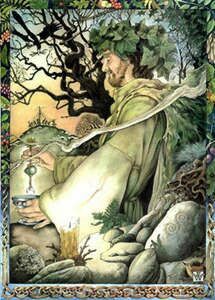 about the Druids is that they were members of a professional class in their culture, the Celtic Nations of Western Europe and the British Isles. (The Druids were not an ethnic group; their culture, the Celtic culture, was.) Druids were the learned class of the Celts. They filled the roles of judge, doctor, diviner, mage, mystic, scientist, and clerical scholar. The Romans later used the same term for leaders of the Britons. It’s not certain if all Celtic cultures used a word similar to Druid or if their social structures were the same. General attributes assigned to Druids: they passed their teachings along orally, not by writings; becoming a Druid required a long period of study; they were excused from military service but could enter battle if they chose; they were members of an elite class which included various occupations. Through history we have lost much, if not most, information about them – since there was no written documents of the history or lives of the Celts other than what their oppressors wrote. We study their mythology, culture as well as archaeology and paleontology pertaining to them, and strive to piece the puzzle together, and mostly we fail.
about the Druids is that they were members of a professional class in their culture, the Celtic Nations of Western Europe and the British Isles. (The Druids were not an ethnic group; their culture, the Celtic culture, was.) Druids were the learned class of the Celts. They filled the roles of judge, doctor, diviner, mage, mystic, scientist, and clerical scholar. The Romans later used the same term for leaders of the Britons. It’s not certain if all Celtic cultures used a word similar to Druid or if their social structures were the same. General attributes assigned to Druids: they passed their teachings along orally, not by writings; becoming a Druid required a long period of study; they were excused from military service but could enter battle if they chose; they were members of an elite class which included various occupations. Through history we have lost much, if not most, information about them – since there was no written documents of the history or lives of the Celts other than what their oppressors wrote. We study their mythology, culture as well as archaeology and paleontology pertaining to them, and strive to piece the puzzle together, and mostly we fail. - “Most of what you see in newspapers, the internet, and around Stonehenge is based upon a recreation of Druidry…… I don’t think it has much reality in archaeology.” — Dr. Francis Pryor – Dept. of Archaeology – University of Nottingham
- Some recent scholarship suggests that the original Druids were a Fire-cult from the Middle East who migrated to the British Isles around 70 CE and assimilated the Celtic nobility. Today, Druids are Neo-Druids.
- Neo-Druids play fast and loose with a lot of Celtic symbols and ideas, and celebrate the Celtic
high days. We also attempt to correspond Celtic deities with non-Celtic ones and create whole new pantheons as well. Some scholars of the Celtic peoples believe that since very little is known about what the ancient Druids actually did, and since those same ancient Druids wrote nothing down about what they did, that modern day neo-Druid movements are just so much hog wash. Frankly, we tend to agree with that assessment. Therefore we do not emulate any other neo-Druidic movements but rather, ‘we’re doing religion the old fashioned way — we’re making it up as we go!” Today the term is used variously, with some opinion that it shouldn’t be used at all because the ancient Celts no longer exist. Currently people using the term “Druid” can be: 1)-Members of a modern Druid organization, some of whom will only call themselves Druids after a period of study. 2)-Self-recognized “traditional” Druids, who claim to have received the knowledge in a family descended from Druids but who won’t describe their beliefs much as they must be taught face to face. - Druid Revivalry is generally regarding to have been started by Edward Williams, who under the name of lolo Morganwg gave the world the book called the “Barddas” which he claimed was based on authentic beliefs of the ancient Druids, although the jury is still out about how much of that is fact. Most Druid Revival groups can trace their beginnings to 1717 and remain close to their fraternal lodge roots. Alternatively Druidism is a label often used by those following what they believe as a polytheistic religion pre-dating Christianity. However, in the end most Neo Druids are following a path that combines many elements of both groups.
- Reformed Druidism is one of many Druidic traditions as well as one of the oldest of the North American ones. It is a little hard to categorize the Druid organizations as they tend to overlap in interests and attitude. They were all founded fairly recently, although some were founded by members of previous Druid organizations. They have been influenced by similar cultural threads. Even nationalist influences have been reduced by migration and the Internet. The following are some broad categories, maybe stereotypes, of types found in Druid groups.
- Traditional or organized Traditional – These derive from folk history in the British Isles and from the Celtic Renaissance/Revival of the eighteenth and nineteenth centuries. They consider that they come from an unbroken line. The European ones have the benefit of living near modern Celtic communities and/or historical Celtic and Neolithic sites. Others complain that their traditions are the result of nineteenth century invention and occultism. Celtic historicists accuse them of being fluffy bunnies.
- Neo-Pagan Druids – This group concedes that they’re not sure what the Ancient Druids did but they
want to create/recreate a modern version. They study the ancient Celts and Neolithic peoples throughout Europe and also modern interests such as psychology and comparative religion. They are seriously trying to establish a religion.Some others, especially British Traditionalists, accuse them of being fluffy bunnies. - “Historically Accurate” Druids – They limit their research to Celts only. If, there’s no text or no archaeological site to back up an idea, they won’t consider it. They may be disdainful of modern society and want to recreate something better. Some seem to express little spirituality or sense of humor. They would eat fluffy bunnies, if properly roasted on a historically accurate Celtic hearth, but fear it might give them indigestion. These are also known as “Orthodox,” “Traditionalist,” “Revivalist” and “Reconstructionist” Druids.
- Eclectic verging on New-Age – They trip through dewy pastures seeking influences from the world round. Choices of ritual or myth are made on an intuitive basis: does it feel right, not, is it related to reality. Some are making serious attempts. Others would be if they could just find the right necklace to match their cape. Some are out and out fluffy bunnies and are loving every minute. Reformed Druids generally believe that if you say you are a Druid then you are one. ~INDEX~
Q: What do you do?
A: We get together periodically for ritual, food, and fellowship. We are active environmentalists, and we tend to joke around a lot. Most importantly, we enjoy each others company. ~INDEX~
Q: Is it true that only men were druids? Were
there women Druids? Can women be druids?
A: Both women and men were druids. Women were treated as equals in the ancient Celtic society and were able to own and  inherit land etc.. There is archaeological evidence to support this. But opinions are
inherit land etc.. There is archaeological evidence to support this. But opinions are
like assholes, everyone has one. There are some who think that Druids were men and somewhat military, that the healing was done by women who were witches. This
idea is more common among some Celtic Wiccans. Many think that not only did the Ancient Druids have women Druids but they had an egalitarian society. Others, more historically inclined, will point out that whereas the Celts allowed their woman more freedom than the other cultures of the era, it was hardly equality as we know it. But there certainly were women Druids then and there certainly are now, two thousand years later. Well…say some others, the position of womenleaders is not adequately defined in the Roman texts. There were women militaryleaders, such as Boudicca, but do we know that they were fully accepted as Druids? They can’t have been common. etc. etc. Women are still able to be druids today and anybody that says otherwise should do more studying. In the RDG Women and Men enjoy absolute equality. There are many Women Archdruids, and our NoDaL is made up roughly 50/50 between Women and Men. Additionally, the Senior Archdruid (Archdruid of the Mother Grove) is presently a woman. She also serves as Matriarch for the Order of the Mithril Star.~INDEX~
Q:What about the LGBTQ community? Can they be Druids?
A: ABSOLUTELY! Several of our Archdruids are LGBTQ as are a about 1/5th of the members of NoDaL.
Q: Do/Did Druids do ritual sacrificing of people or animals?
* A: NO!!! Certainly, Neo-Druids DO NOT conduct ritual sacrifice of people or animals. Although there are many stories about the Druids and their ritual sacrifices, most of them can be traced back to the writings of Julius Caesar, who at the time was at war with the Celts. This was just propaganda. There is
no archaeological evidence to support the supposed sacrifices. The druids held all life as sacred, so it is hard to believe that they did conduct ritual sacrifices. Some people have suggested that if the Druids did sacrifice, then it would be considered a great honor by the person being sacrificed. The Druids had no fear of death so this is plausible, however there is really no evidence to support this or any form of sacrifice. The existence of spectacular Wicker Man type sacrifices also seems unlikely, given the only source is Roman military texts. The Greeks and Romans had practiced human sacrifice sometimes during their histories so it wouldn’t be all that surprising if the Celts also did. It is known that the Celts
took heads as trophies during war and they most likely executed prisoners of war and criminals. However, we don’t know if these acts had religious connotations for them, because the Druids didn’t believe in writing down their beliefs and practices. Some are sure that the strangled “Bog Men” prove at least small scale human sacrifice. But reading the difference between “execution” and “sacrifice”
in archaeological remains is difficult. If the topic interests you, read up on it yourself. The Romans recorded that they sacrificed humans, specifically condemned criminals. Judicial executions were no different elsewhere in Europe, including Saxony. The Romans wrote that such victims were tied into huge wicker man-shaped effigies and burned alive. The archaeological record does reveal a number of sacrificial deaths, such as “triple-deaths” where the victim was drowned, stoned, and impaled on a spear simultaneously. Some mythologies describe one person’s life being sacrificed so that a terminally ill VIP would survive, thus indicating a belief in a cosmic balance of forces. However, it is more certain that this was mainly anti-Druid propaganda. Julius Caesar had good reason to make the Druids look bad, because,after all, he was trying to conquer them. It would fuel interest in his campaign back home if he could prove that the Celts engaged in such barbaric practices. On the other hand, the Romans would kill people in gladiatorial games, for the entertainment of the people. The Druids, if they did sacrifice people, could claim religious sanction. The archaeological record is ambiguous if such sacrifice was
judicial or ceremonial, or even if it occurred at all. Does the above seem contradictory? That’s because the record, what there is of it, is also contradictory. Rest assured that modern Druids do not sacrifice people or animals. We do sometimes sacrifice plants. 🙂 ~INDEX~
Q: Do all Druids hug trees?
A: They should. Druids recognize that all living creatures have spirits, including trees. The Druids held trees in high regard. Touching the tree (hugging it)
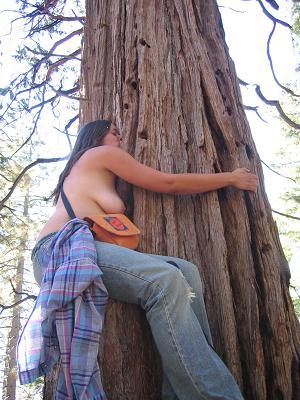 allowed the Druid to commune with the spirit within that tree. ~INDEX~
allowed the Druid to commune with the spirit within that tree. ~INDEX~
Q: Do Druids perform Magick spells?
A: Only if they want to. Not all Druids use Magick, but yes some do. Magick is really no different than prayer. Both can be used to accomplish the same ends. ~INDEX~
A: Druids follow the Celtic wheel of the year. There are four ‘main’ sabbats, and four ‘minor’ ones. The Celtic New Year begins with Samhain (pronounced Soween – Welsh, Saven – Scottish, Sowin- Irish) on 31st October (also known as halloween). The holidays are as follows. SAMHAIN, Yule, IMBOLC, Spring
Equinox, BELTANE, Summer Solstice, LUGHNASADH, Autumn equinox. ~INDEX~
Q: What Gods did the Druids worship?
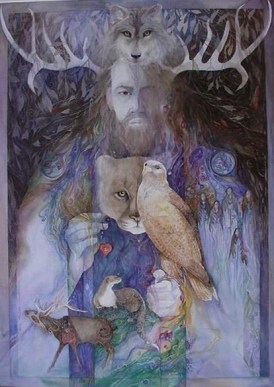
* A: This depends on the nation you look at. Ireland had different
gods than Wales, who had further different gods than Gaul. Another point to consider is not only were gods known by different names, but many of the names were deemed too holy to pronounce aloud. (thus the common oath: “I swear by the god my tribe swears by”.) Here is a brief, by no means authoritative, list of deities.
Ireland: The Tuatha de Danann (Tribe of the Goddess Danu) was the name of the pantheon, for the Sidhe (faeries) were  descended
descended
from Her. Some names you may recognize: Lugh of the Long Handed, Son of the Sun. Dagda the Good (good not by his moral disposition but by the diversity of his skills) Morrigu, Babd, and Macha (a triple goddess of War.) Brigid (a triple goddess of Fire, Poetry, and the Forge) Diancecht, god of healing Manannan mac Lir, god of the sea and master of magic
- Wales: Welsh mythology tends to focus on the actions of heroes, and their interaction with gods. Arawn , lord of the Annwyn (the underworld) Math ap Mathonwy, the quintessential wizard Pwyll,
lord of Davyd Rhiannon, (wife of Pwyll) Goddess associated with horses and the Underworld, Gwydion, the magician and trickster, and his sister Arianrhod, Lyr, god of the sea, Manawyddan
Gaul: Gaulish deities are the focus of Caesar’s records. He drew analogies between his own Roman gods and those he discovered in Gaul. Herne the Hunter Taranus, Teutates Esus, Hu’Hesu, the Dying God Cernunnos, Master of the Wild Hunt, or the Animal Lord/Green Man, Epona, The Horse Goddess. Not all modern Druids worship the gods by name.
- There is some evidence that the Druids of old believed in a kind of universal Life Force, flowing from a central place (such as the Irish Well of Wisdom or the Welsh Spiral of Annwyn), to and from all living things. Perhaps the best modern description is Obi-Wan’s description of the “Force”, from the famous Star Wars films. 🙂 Neo Druids may worship any or all of the above. Reformed Druids lean towards Dalon ap Landu, Be’al, “the Earth Mother,” Sequoia, and Cywarch merch Dalon. But these are archetypal, and not seen as real entities, as are all the other known Celtic gods. and like all religionists of the ancient past, the Druids invented their Gods, their ceremonies and the tenets of their religion. Reformed Druids are Panentheists. They believe, “Thou art God.” All of us, the whole universe in fact, is God. “Thou art God,
and I am God and all that groks is God.” — Valentine Michael Smith ~INDEX~
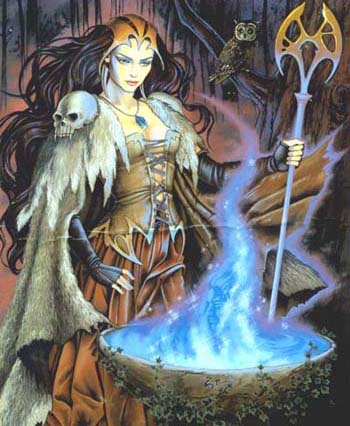
Q: Dalon ap Landu?? I’ve never heard of him. What did you do, make him up?
A: In fact we did. How do you think the other Gods and Goddesses came to be? They were made up. The difference is that Lugh and Danu et .al. were made up centuries ago. Dalon, Sequoia and Cywarch were made up practically yesterday. This is a simple fact: All the religions and spiritualties, and all the deities
of the world were invented by human beings. None of them exist on their own, or existed prior to their being imagined by humans, no matter how ancient they may be. ~INDEX~
Q: What are the historical sources by which we can know the Druids?
*A: Prof. Ronald Hutton, a historian at Bristol Univ. (UK), once wrote: “All that we know about the Druids is that they were the most highly respected magical practitioners and spiritual experts of the tribes of northwest Europe. The trouble is that we don’t have a single word of writing left by a Druid, and we don’t have a single archeological artifact that everyone agrees is associated with the Druids. We know so little about them in fact that they are almost legendary characters.” Again, the main sources we do have on what they did are Roman historians, who wrote on them as they were in the process of conquering Gaul (what is now France; a variant of Welsh is still spoken in Brittany) so there is that political problem, and they equated Celtic deities with Roman ones as well. The main authors are Julius Caesar, Pliny, Tacitus, Strabo, and Diodorus Siculus. But in my point of view, the best sources are the mythologies. There we can read of what the Druids did, how they behaved, what
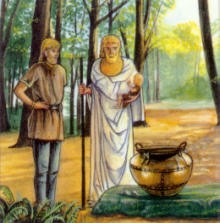 some of them said, and though the medieval manuscripts that preserved them were written by Christian monks, much wisdom yet remains there. In Ireland the chief myth cycles
some of them said, and though the medieval manuscripts that preserved them were written by Christian monks, much wisdom yet remains there. In Ireland the chief myth cycles
are the Ulster Cycle, the Fionn Cycle, and the Invasion Races. In Wales, the major myths are contained in a book called The Mabinogion – as well as in the
Red Book of Hergest, and the Black Book of Carmarthen. In this century, a number of folklore collections were made of remaining oral-tradition
stories, the best of which are W.B.Yeats’ “Mythologies” and Lady Gregory’s “Gods and Fighting Men”. If you were to expand your search to include historical and archaeological records, you might have more luck, and may arouse less suspicion if your area is not very pagan friendly. In fact what you will be doing is precisely what the Druids did, for they had to study so many academic, legal, and spiritual subjects they became walking encyclopedias. The problem is that the zdruids were the subject of a number of persecutions and conquests, not only by the Romans,but also by later Christians. Some Druidic wisdom was censored, evolved into something unrecognizable, or just plain lost. A modern person might attempt to reconstruct the wisdom based on the sources discussed above. The Romans never invaded Ireland, so that country became a haven for Druidic learning for a while. After St. Patrick and St. Columcille, Ireland evolved a unique and beautiful blend of Christianity
and Druidism, headquartered on the Isle of Iona, which was later to be eradicated by the invading English. Catholicism eventually became a point of national identity in Ireland (and without it they may never have become independent). ~INDEX~
Q: Do you cast a circle?
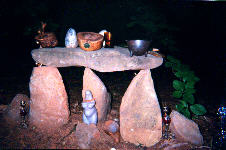
A: No we don’t cast a circle – we consider all of Nature to be sacred and don’t need to create sacred space. However we do often times consecrate a space before ritual to clear out any negativity. ~INDEX~
Q: Do you worship Satan?
A: No, We don’t believe in Satan and therefore don’t worship him nor do we have an equivalent to Satan. Satan is in fact one of the four Gods of Christianity, and has no place whatsoever in either Druidry or in Paganism. It’s obvious that the real Satan worshipers are Christians. After all, look at how much time and energy they spend talking about him. ~INDEX~
Q: Do you believe in and follow the Pagan Rede, and the “Law of Three?”
A: No. First of all, there is no such thing as the “Pagan Rede.” There is however, the “Wiccan Rede,” and it is just that, a Rede, or advice for Wiccans. Since we are Druids, we don’t believe in or follow it. Likewise, we do not believe in or follow the “Law of Three.” It’s not part of our belief system,
just as Satan, Hell and Heaven are not part of our belief system. “That software doesn’t run on our operating system.” ~INDEX~
Q: If you don’t follow the Rede than what is the basis of your ethics?
A: The idea that we are all one people on this Mother Earth, and so harm to one is harm to all and harm to oneself, should be sufficient. We also take in the wisdom passed down through the ages known as the Celtic Triads (and for all we know, they may be all that is left of the wisdom of the ancient Druids).~INDEX~
Q: Who are / were the Celts?
* A: This is a hot topic and there are many definitions: (1)- A culture and people defined by the archeological remains of two cultures now in Austria and Switzerland: Halstatt ( 800BC to
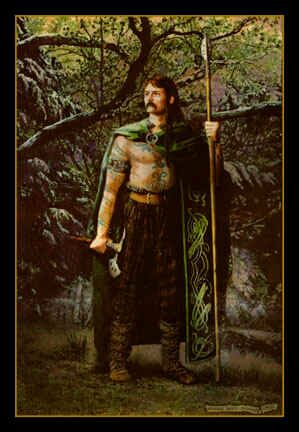
250BC ) and La Tene ( +/- 430BC to 1AD ). The Celts, whose language group belongs to the Indo-European family of languages, eventually occupied lands from Turkey to Spain to the British Isles. Names of a few of the tribes were: Arverni, Treveri, Helvetii, Iceni, Venetes, Silures, Caledonii. Most were conquered by the Romans
by 200AD. Remnant peoples in Ireland, Scotland and Wales converted/were converted to Christianity by +/- 700AD. (N.B. This definition excludes the pre-Celtic Neolithic peoples, who built stone monuments, such as StoneHenge and Newgrange. ) (2)-
The peoples living in the modern Celtic “nations” of: Brittany, Cornwall, Ireland, Mann, Scotland and Wales. While united in prehistory, they have differences in language, history and culture. (N.B. The Welsh and Scots get really annoyed if you equate “Celtic” solely with “Irish”. ) (3)- Anyone, living or dead, in an area, ever occupied by the Ancient Celts. (4)- Anyone, anywhere with a drop of *Celtic blood in their ancestry. So, roughly, the definitions run from: “The Celts as a people were extinct by 400AD and that’s that!” to: “Anyone can be a Celt, if they really feel it!” *This is merely a figure of speech. There is no Celtic bloodline. See below. (5) — There’s an idea going around that “true Celts” (or Irish or Scots) have red hair and blue or green eyes. This is pure wishful thinking. The tendency among some of Scottish and Irish descent to have red (or blond) hair and blue or green eyes is a genetic trait inherited from the Saxons, whose Viking ancestors raped their way up and down the coasts of the British Isles. A “true Celt” is someone who speaks a Celtic language. Period. Some expand this and limit it to those speakers living in a “Celtic community.” What’s interesting is these people, who do in fact exist in Ireland, Scotland, Wales and elsewhere, are much more likely to be Christians than Pagans (though they may be practicing some Christianized Pagan
customs). ~INDEX~
Q: Wait a minute: The Celts were European. They are part of the R1b Chromosome group. Isn’t that correct?
A: This is a popular notion among some white supremacist hate groups, but the problem is that the word “Celt” and “Celtic” refer only to language and culture, not to race or bloodline. Most scholars maintain that if a person of, for instance, African descent were to move to a village in Scotland and adopt Scots Gaelic as his primary language, he would be in effect, a “Celt”, having immersed himself in Celtic language and culture. Even the notion that the Celts were European is suspect by modern scholars. There are hundreds of words and even phrases in Welsh and in Hindi that are very much alike. Likewise, there are deities that cross the between Hindu and various Celtic mythologies. There is mounting
evidence that the ancient Celts therefore may have originated in India. But that may also be spurious. Some of a more esoteric bent have the idea that the ancient Celts may be one of the ten lost tribes of Israel, specifically that of Dan. This comes from the idea of their naming the river Danube, of their worship of Danu, all of which is circumstantial at best. We won’t even get into the idea that the Druids are descended from the ancient priesthood of Atlantis! Although this makes as much sense as the idea of there being a Celtic race. ~INDEX~
Q: How do you say … in Celtic?
A: Not a valid question, unfortunately, because there is no one Celtic language. Ask rather about: Breton ( Brezhoneg ), Cornish ( Kernowek ), Irish ( Gaeilge ), Scots Gaelic* ( Gaidhlig ), Manx Gaelic ( Gaelg ), or Welsh ( Cymraeg ). You might also post such a request to one of the related soc.culture groups. There have been occasional naughty mis-translations. The modern Celtic languages are in two groups: Q-Celtic, Goidelic – Irish, Scottish and Manx Gaelic – derived from Old Irish P-Celtic, Brythonic – Breton, Cornish and Welsh – derived from Old Welsh * Note: Don’t confuse with “Scots” a Germanic language related
to English. ~INDEX~
Q: Are Druids polytheists or pantheists? Monotheists?
* A: The ancient Celts seem to have been polytheists. There are many gods and goddesses identified with the Celts. After the Gauls, Belgae and Britons were conquered by the Romans, there were hybrid forms. Or, at least, there were inscriptions pairing the names of a Roman god and a Celtic god. Also
the type of belief varies e.g.: are the gods real or are they metaphors?; is faith authoritative or individual?, etc. This can be a very sensitive subject. Agnostic types and true believer types can hurt each other’s feelings without even meaning to. Druids today, as mentioned elsewhere, are panentheists. ~INDEX~
Q: Is Nature important to Druids?
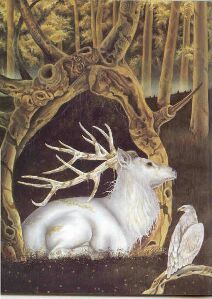
A: SHE is everything to Druids. While people in many parts of the third world are intimately dependent on nature for their survival, few of us are. The Celts had to read the seasons so they could plant their crops;had to know where to find wild plants if the crops failed; had to know birds and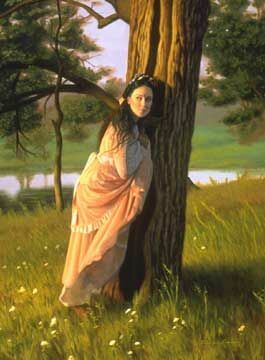 their habits for divination; had to know which tree produced good wood for spears or
their habits for divination; had to know which tree produced good wood for spears or
yokes or buckets; had to know the habits of animals for hunting and fishing; had to know the earth so they could find ores for their tools and weapons and jewelry. The modern Druid should know a lot about nature and spend time in the Wild. Nature is the true focus of Druidism. Some worship Nature. Some romanticize Nature. Some
live in nature. Some mine it as a source for symbols. Some abstract it and assign it a place in their philosophy. From a political viewpoint, all Druids are environmentalists. They might not all be in the front lines of the environmental movement, but they will at least contribute to groups like Greenpeace, The Sierra Club. EarthFirst! etc. No Druid would ever vote for a candidate known to be “soft” on the environment, nor could they support a political party which advocated the repeal of laws designed to protect the earth mother. It goes without saying that Druids recognize that we are all one with the earth; that we are part of the whole ecosystem that is Gaia. So naturally, we Druids are compassionate, recognizing that when one person suffers, the whole of the Earth Mother suffers as well. So Druids carry a vision: a day will come when poverty, disease, pollution and inequality are wiped off the face of the earth, “when peace will guide our planet and love will steer the stars.” “We want a world where there is love for everybody — We want a world where there is no more war — We want a world where there is hope for everybody — We want a world that’s better than before — Give us a world where there is food for everybody — Water is pure the air is fresh and clean — We want a world that is good for everybody — We want a world where everyone is free.” (Gypsy, from the CD “Enchantress”) That’s Druish politics in an acorn shell. ~INDEX~
Q: Was Stonehenge a Druidic temple?
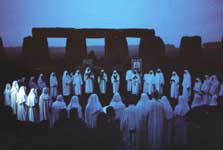
* A: Perhaps. The question of who built Stonehenge is one of academic debate. The theory that most people find acceptable is that since carbon-14 dating places the construction of Stonehenge before the rise of Druidism, so the Druids did not build it – however that does not rule out the probability that
they knew how to use it. The solar and stellar alignments Stonehenge embodies would not have been lost on an intelligentsia so well versed in astronomy. ~INDEX~
Q: What about Glastonbury?
* A: Some folkloric traditions and mythographic examinations suggest that Glastonbury Tor is the mythic Isle of Avalon. If, for example, the nearby river were to flood, the Tor would be an island. A certain thorn tree is said to be the descendant of the staff of Joseph of Arimathea, which was changed into a thorn tree when he set it there (the Thorn is sacred to faeries!), when he brought the Grail to Britain. Avalon means “Isle of Apples”, and apple orchards do grow there. Some archaeologists believe that,if one accounts for centuries of erosion, the sides of the Tor are terraced into the shape of a Cretan Maze pattern. Whether or not the region is Druidic, anyone who has meditated by the nearby Chalice Well knows it is a holy place. ~INDEX~
Q: Are there any other Druidic sites?
* A: There are hundreds of stone circles dotting Britain, Ireland and Northern France.The Hebrides of Scotland are famous for them. In Ireland,
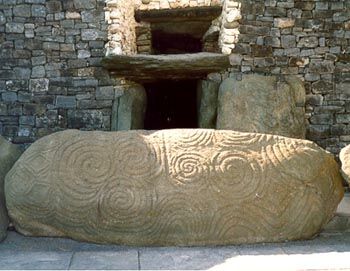
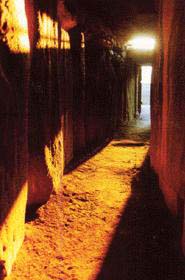 there are many sacred wells dedicated to St. Bridget, an obvious borrowing from the earlier goddess Brigid. There is Newgrange, a temple/tomb/center for initiation rites in Ireland, thousands of years older than the Pyramids, which is constructed
there are many sacred wells dedicated to St. Bridget, an obvious borrowing from the earlier goddess Brigid. There is Newgrange, a temple/tomb/center for initiation rites in Ireland, thousands of years older than the Pyramids, which is constructed
to allow sunlight into the inner chamber on Midwinter sunrise only.
~INDEX~
Q: Was Merlin a Druid?
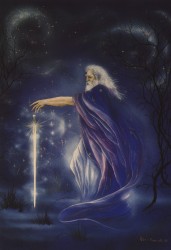
* A: Assuming he lived at all, then undoubtedly, he was, and one of the last in Britain before the wisdom was lost. The Arthurian legends are unique because they embody the delicate transition period between Druidism and Christianity. Christianity was well entrenched as the religion of the nobility, yet Druidism remained in the form of folk practices. Misty islands and otherworldly hunting expeditions, which comprise much of Arthurian legend, clearly originate from the older Celtic mythologies where such encounters are signs of the presence of the Otherworld. And perhaps all those “wise hermits”, that the Knights are always running into, are Druids in hiding. ~INDEX~
Q:Was Gandalf/Mithrandir a Druid?
A: Gandalf, or as he was known to the Elves, Mithrandir, is a fictional and principle character in Tolkein’s Lord of the Rings and The Hobbit. He belonged to a race called the Isitari of which there were only a handful, and in interviews, Tolkein specifically stated that the character was not based upon the Druids. The Wikipedia article begins thusly: ” In the fiction of J. R. R. Tolkien, the Wizards of Middle-earth are
a group of beings outwardly resembling Men but possessing much greater physical and mental power. They are also called the Istari (Quenya for “Wise Ones”) by the Elves. The Sindarin word is Ithryn (sing. Ithron). They were sent by the Valar to assist the peoples of Middle-earth to contest Sauron. The wizards were Maiar, spirits of the same Degree as the Valar, but lesser in power. The first three were known in the Mannish tongue of Westron as
Saruman (“man of skill”), Gandalf (“elf of the staff”), and Radagast (“tender of beasts”). Tolkien never gave Westron names for the other two; one tradition gives their names in Valinor as Alatar and Pallando. Each wizard had robes of a characteristic colour: white for Saruman (the chief and the most powerful of the five), grey for Gandalf, brown for Radagast, and sea-blue for Alatar and Pallando (known consequently as the Blue Wizards). Gandalf and Saruman both play important roles in The Lord of the Rings, while Radagast appears only briefly. Alatar and Pallando do not feature in the story, as they journeyed far into the east after their arrival in Middle-earth. Tolkien gives multiple names for all of them. In Quenya Saruman was Curumo (“skillful one”), Gandalf
was Olórin (“dreaming” or dreamer”); and Radagast was Aiwendil (“friend of birds”). The Quenya names Morinehtar (“darkness-slayer”) and Rómestámo (“east-helper”) are given for Alatar and Pallando, though it is not clear which name goes with which wizard. Other names are noted in individual articles. As the Istari were Maiar, each one served a Vala in some way. Saruman, or Curumo, was the servant and helper of Aulë, and so learned much in the art of craftsmanship, mechanics, and metal-working, as was seen in the later Third Age. Gandalf was the servant of Lórien, and so knew much of the hopes and dreams of Men and Elves. Radagast, servant of Yavanna, loved the things of nature, both Kelvar and Olvar. As each of these Istari learned from their Vala, so they acted in Middle-earth.” You can read the complete article at http://en.wikipedia.org/wiki/Wizard_%28Middle-earth%29 Notice that the word “Druid” does not appear here. That’s because Tolkein did not mean to associate them as Druids. However an even more obvious point is that Gandalf often was armed with a sword, something we know from scholars, like
Dr. Ronald Hutton, would not have occured. The Druids were quite distinct from the warrior class in Celtic society and were frequently utilized as diplomats and negotiators. There is no historical record of a Druid taking up arms. ~INDEX~
Q: What is a Grove?
A: A Grove is a group of trees, oftentimes with a clearing in the center. It is known that the ancient Druids once frequented woodland groves, presumably for worship. Modern Druids adopted this term (with a capital G) to refer to a group of Druids. A Grove, then, is a group of Druids of like mind who come together regularly to celebrate the seasonal rites, to worship, and/or to perform Druid magic and healing. ~INDEX~
Q: * In the old days they say it took nineteen years to train a Druid, how can you do it in 19 weeks?
A: Actually we don’t. A Druids education begins when he or she decides to be a Druid. From that point it never ends. The world has changed a lot over the last few thousand years. In the modern world most countries now have public schooling which ancient Celts did not enjoy. When you add in the training received in public schools plus the higher learning provided by universities, then the number of years for education for people today starts to match that required of the original Druids. Nineteen years is also a symbolic length of time: it represents a Metonic cycle: a calculation of the time between two almost
identical eclipses, and a calculation which also succeeded in uniting the solar and lunar calendars. And so nineteen years symbolizes the time it might take for someone to unite the sun and moon, the Masculine and the Feminine, within their beings. Today it still takes a long time to achieve this union in the depths of our souls, and the study of Druidry is a lifetime pursuit for many. But we no longer need to train for nineteen years before we can call ourselves a Druid. In fact the term Druid has now come to denote, for many, the type of spirituality they follow. ~INDEX~
Q: * I read somewhere that you Reformed Druids don’t require study. How can you claim to be Druids if you don’t?
A: Reformed Druidism requires only that you ascribe to the two tenets. Period. For the past 45+ years, we’ve required nothing else, and we shall always be that way. However, most Druids choose to study and we offer and opportunities to do so. We feel that freedom is the most important thing. Many of us don’t want a religion that says we have to do this, or we have to do that. It’s much more valuable if we do whatever we do incentives (including study) because we want to, rather than we have to. So yes, you don’t have to study to be a Druid — you GET to. ~INDEX~
Q: I’m a Wiccan. Can I be a Druid too?
A: Many members are also Wiccan, and find Reformed Druidry to be a powerful and valuable complement to their path. The same is true of practically all other religions as well, and it’s traditional within Reformed Druidism to accept other spiritual paths. There are Hasidic Druids, Christian Druids, Zen Druids, etc. All have valuable contributions to make to Druidry. All can learn much from Druidry. ~INDEX~
Q: Are there any connections between Druid and Native American Ways?
A: They have much in common: the honoring of the directions, a deep reverence for the natural world, a belief in animal guides, and an abiding sense that the land itself is sacred. There is even evidence that the Druids worked in sweat lodges, and we know that birds’ feathers were used in ceremonial clothing and headdress. In America some Native American teachers express the opinion that “white people” are taking their traditions from them, just as they have taken their land. “They should make connection with their own roots first,” they have told us. “Then they can come to us if they like, but first let them
make peace with their own ancestors.” While being wary of generalizing, because there are always exceptions, we believe they are probably right. Once we can feel fully at home in our own indigenous tradition, then somehow it is easier for us to relate to other traditions. Coming from a secure, rooted base we no longer have the feel of an outsider or a predator, and we can transcend the divisions of race and culture to feel truly at home in all traditions, with all of humanity. ~INDEX~
Q: Is the Goddess honored in Druidry?

A: Very much so – and this is discussed in The Druid Path course. Members are free to conceive of Deity in their own way. Generally, the Goddess is referred to as the “Earth Mother,” “Gaia,” or, more
simply, as “Nature.” ~INDEX~
Q: Do I have to be a Celt to be a Druid?
A: Not at all. Anyone can follow the Druid path, regardless of ethnic origins, gender, or sexual orientation. Over 200 million people in Europe, America and Australia can trace their ancestry to the Celtic lands. But in fact the tribes called Celtic by the Greeks and Romans were so varied and intermingled so much, the Celtic scholar Dr. Anne Ross can rightly say that the Celts are the ancestors of most modern Europeans, and therefore of most people of European origin. In addition, many people of Afro-Caribbean origin have Celtic ancestry too, since Oliver Cromwell sent many ‘slaves’ (indentured
servants) to the Caribbean, and they intermarried with descendants of slaves of African origin. Also, if you believe in reincarnation (as did the ancient Druids), then our genetic ancestry is only one strand of our inheritance. Whatever our ethnic origins in this lifetime, we will have had other ethnic origins in
other lives. And in the final analysis, we are all members of just one race: humanity. Druidry celebrates our humanity, and is not restricted to just one ethnic group. Let us speculate for a moment: Suppose the Druids of old had survived into our time. Further suppose that like other peoples and religions, the Druids had migrated to the New World. How would Druidry look in modern America? How likely is it that Druidry would insist on holding rites in Welsh or Gaelic? Or, perhaps there would be distinct branches of Druidry, just as there has developed distinct branches of, for example, Judaism and Quakerism. Each has adapted – evolved – into a system that meets the needs of it’s modern adherents. And all of these adaptations bear only a little resemblance to the parent religion. It’s highly unlikely that Druidry would be exclusive to modern Celts. To insist that Druids must be Celtic is almost always a racist vantage point. ~INDEX~
Q: You don’t really seem very Celtic oriented.
A: You’re right. We’re not trying to be. We just don’t see that as being very important. If you are looking for a really Celtic centric group, you should probably go elsewhere. We are “Celto-philic,” which is to
say that, generally, we like Celtic stuff but we’re not Celt-centric. We feel that if the Druids of ancient times had survived into our time, and assuming they would have migrated to the New World, that over time they would have become more Americanised in the same way that Reformed Jews aren’t all that true to Jewish culture. Rituals would be conducted in American, not Welsh or Gaelic for example. They would have probably adopted some of the spiritual disciplines of other groups as well. They would have added those things which help people to grow closer to Nature and to the Gods, which is the real purpose of Druidism anyway. Much of what passes today as Celto-centrism is nice and all, but it’s mainly a lot of pomp and circumstance; “fluff.” Ok and even fun in an of itself, but a distraction from the real work of Druidry. We have found that people who insist on Celticness are usually coming from a racist perspective, and so not very Druid like. ~INDEX~
Q: What’s up with that Sanscrit Om symbol you display?
A: Among archaeologist and historians it is a well known fact that the ancient Celtic tribes traveled through the Indian subcontinent on their way to Europe. In fact they dwelled for many years there and assimilated a great deal of knowledge, both practical and theological. Gaelic and Welsh, for example, contain words an phrases that are identical to some in Hindi, including the names of some of the Gods. Based upon extrapolation we suspect that the Hindu theology had a lasting and permanent impact upon Celtic mythological thinking, ethics, and even music and art. So we include the Om in our logo. Some Guru’s say that Om is actually the name of God, whom they describe as the universal soul which is shared by all living beings.
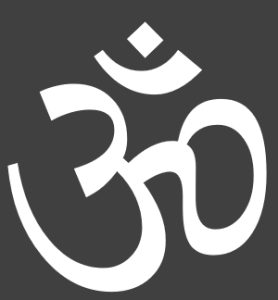 ~INDEX~
~INDEX~
Q: It (Druidry) has nothing to do with position within a people? Nothing to do with being a repository of the wisdom “of the
tribe”? What does it mean unconnected to one’s people and one’s land?A: We view “the people” as ALL the people of the Earth. “The tribe” is all those connected to Gaia living on the Earth, and “our land” is the planet itself, so we are indeed connected to the people and the land. Our mission is the awakening of the Earth mother, and the people connected to her. The tribes and villages of the ancient Celts are gone. No longer can we afford to divide ourselves into petty squabbling groupings. There is only one people, one tribe, one race, one village, one Earth. That is the message of Druidry at the dawn of the Aquarian age. ~INDEX~
Q: Is Druidry shamanic?
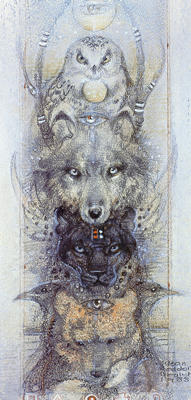
A: Actually, the word “shaman” denotes a particular spiritual functionary in a particular culture. What people generally are talking about when they say “shaman” is “ecstatic trance”. Michael Harner, a world authority on ecstactic trance, speaks of it as one which is best defined as a method to open a door and enter a different reality. Much Druid ceremony and meditation has as itsgoal journeying into other realities, and the word ‘Druid’ is related to words meaning both ‘oak’ and ‘door’ – with the symbol of the door or gateway being central in Druidic teaching. We can find many elements of ecstactic trance
woven into the philosophy and practice of Druidry, but Druidry is not exclusively so – it has alchemical, magical, and philosophical dimensions too. ~INDEX~
Q: You understand that Druidism isn’t a religion, right?
A: Druidism was not a religion in ancient times. The Druids of old were the Priests and Priestesses of the religion that the ancient Celtic peoples practiced. We don’t know what that religion was called. We don’t even know whether or not the ancient Celts realized they were practicing a religion. Like the Hindi culture today, Celtic religion was so interlaced with everyday life that it couldn’t really be categorized as something as separate as we today call “religion.”
Today however, there IS a religion we call “Druidism.”
It’s not the religion of old (because we don’t know and can’t know what the ancient Celts practiced), it’s a modern invention that is ever evolving and changing and remaking itself into a relevant spirituality that modern, educated, technologically advanced, ecologically mindful people can embrace and live by.
Having said that, there is an idea among Reformed Druids that we are all Priests, or at least, training to be Priests. There are some who say it is impossible to have a religion consisting entirely of clergy, but they are obviously not aware of the Quakers, aka, Religious Society of Friends, whose members are ALL considered to be ministers. ~INDEX~
Q: How can being a Druid help me in my everyday life?
A: Most of our problems, both individual and social, seem to come from our sense of alienation, of being disconnected: from Nature, from our hearts, from our Selves, from others, from Spirit. Joining the Reform helps us rebuild these connections, or remember them. By celebrating the seasonal festivals and working with the sacred plants and animals of Druid tradition, we get closer in touch with the natural world. By working with the experiential exercises in the course and on retreats, workshops and camps, we open up to our hearts and the hearts of others. And as we connect and network across the world with others of like mind and feeling, sharing water and growing closer, we come to experience a real sense of community, which touches us even deeper when we actually meet in the physical world. ~INDEX~
Q: Are you people for real?
A:We certainly are. We’re people just like everybody else. We’re educated, with careers, families, pets, homes, and cars. We have real lives. If you saw us on the street, you’d think nothing of it. If you engaged one of us in conversation, you’d find us bright, witty, and friendly. We just have spiritual beliefs that are a bit off the beaten path, and talents that not everyone can boast of having. ~INDEX~
Q: Do you ever really meet, or are you just online?
A: Someone on Usenet (which is btw, the LAST place you should look for any kind of knowledgeable information on Druidism) once called us a “handful of email buddies,” but we do really meet in person! There are Groves in many places of the US, and we host an annual convention in the Northern California Redwood Parks. Some of us also live in small communal groupings. ~INDEX~
Q: What will I get out of joining?
A: You already know this: You get out what you put in. ~INDEX~
Q: Who can be a Reformed Druid?
A: Anyone who loves and reveres Nature. ~INDEX~
Q: How do I join?
A: Go HERE.
Q: How do I quit?
A: Just walk away (it’s nice if you let us know, but you don’t have to). ~INDEX~
* Note: Much of what is written above pertaining to the Druids of ancient times is what we think we know about the Druids, and therefore not at all authoritative. Scholars have done a great deal of second-guessing, educated-guessing and surmising concerning the archaeological and anthropological evidence, which is all very scant.
